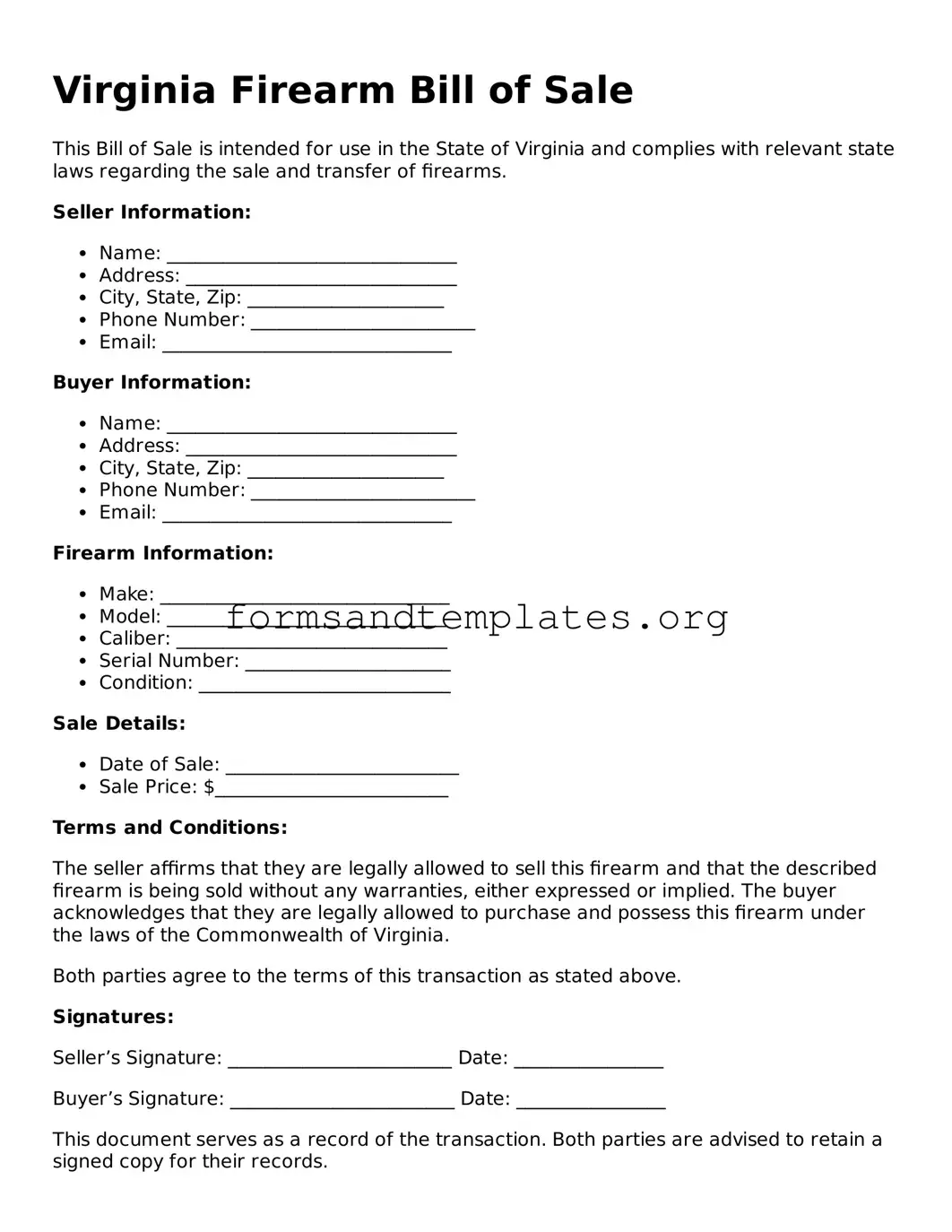Virginia Firearm Bill of Sale
This Bill of Sale is intended for use in the State of Virginia and complies with relevant state laws regarding the sale and transfer of firearms.
Seller Information:
- Name: _______________________________
- Address: _____________________________
- City, State, Zip: _____________________
- Phone Number: ________________________
- Email: _______________________________
Buyer Information:
- Name: _______________________________
- Address: _____________________________
- City, State, Zip: _____________________
- Phone Number: ________________________
- Email: _______________________________
Firearm Information:
- Make: _______________________________
- Model: ______________________________
- Caliber: _____________________________
- Serial Number: ______________________
- Condition: ___________________________
Sale Details:
- Date of Sale: _________________________
- Sale Price: $_________________________
Terms and Conditions:
The seller affirms that they are legally allowed to sell this firearm and that the described firearm is being sold without any warranties, either expressed or implied. The buyer acknowledges that they are legally allowed to purchase and possess this firearm under the laws of the Commonwealth of Virginia.
Both parties agree to the terms of this transaction as stated above.
Signatures:
Seller’s Signature: ________________________ Date: ________________
Buyer’s Signature: ________________________ Date: ________________
This document serves as a record of the transaction. Both parties are advised to retain a signed copy for their records.
